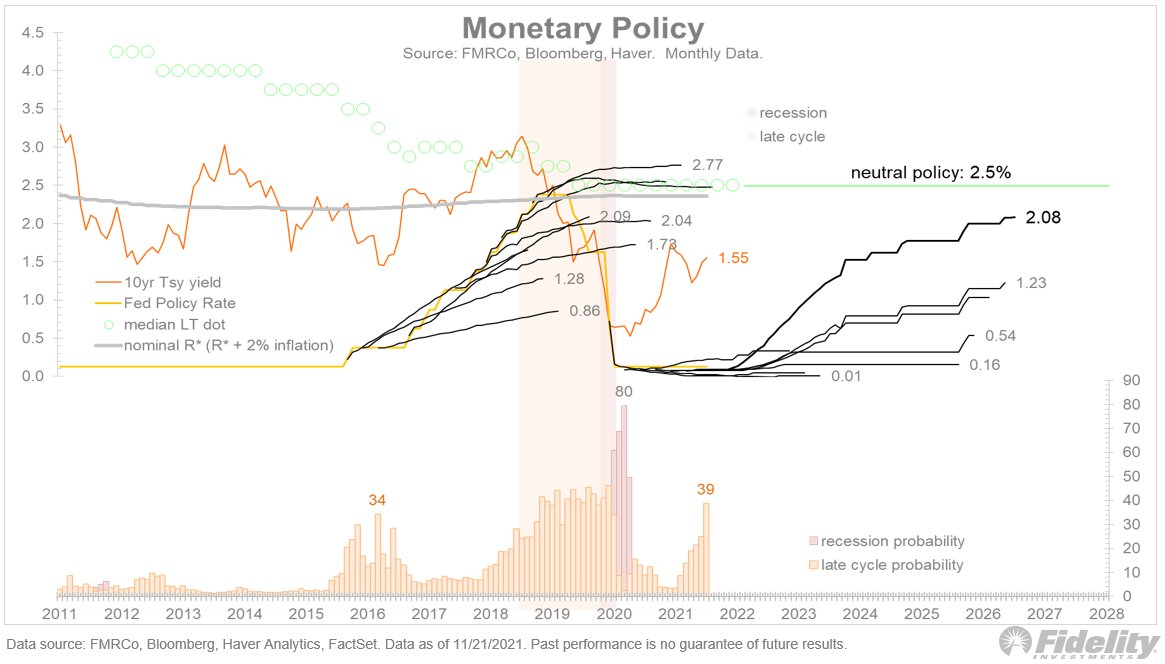
What’s next for the Fed? The Chairman made plenty of news yesterday, but IMO it all comes down to financial conditions. The GS Financial Conditions index (GSUSFCI) is a real-time look into the financial economy, which tends to lead the real economy. (THREAD) 

Financial conditions are at their all-time loosest. Perhaps this is why the Fed is hinting at speeding up the timeline. To me the bigger question is: What needs to happen for the FCI to tighten, and by how much, in order to cause the Fed to pivot back to a more dovish outlook? /2
The chart above shows that, in both 2016 and late 2018, a sharp tightening of financial conditions forced the Fed’s hand to either slow down the cycle or reverse it altogether. We are far away form that outcome, it seems. /3
The GS financial conditions index is a proprietary indicator, but we know that its components are stocks, credit, the dollar, and rates. it’s relatively easy to attribute the changes in the index to changes in the underlying factors. Take a look: /4 

I regressed the weekly rate of change of the five series against the weekly change in the GSUSFCI, which produced a correlation of 0.93. I doubt that Goldman Sachs calculates its index in such a simple way, but I think my result is close enough and can serve as a proxy. /5
I took a bit of creative license, using the 2yr yield as the short-term rate proxy (since the Fed can anchor the overnight rate at will). And I used the real 10yr yield as the long rate proxy, instead of the nominal 10yr yield. /6
Even with these two variations, my fitted model seems to be a close proxy for the GS index. This allowed me to explore scenarios: What would need to happen to each underlying factor before it forced the Fed’s hand? /7
My conclusion is that financial conditions are mostly driven by changes in the S&P 500. A distant second and third are the dollar and spreads, followed by rates. More on this in my next thread. /END
• • •
Missing some Tweet in this thread? You can try to
force a refresh












